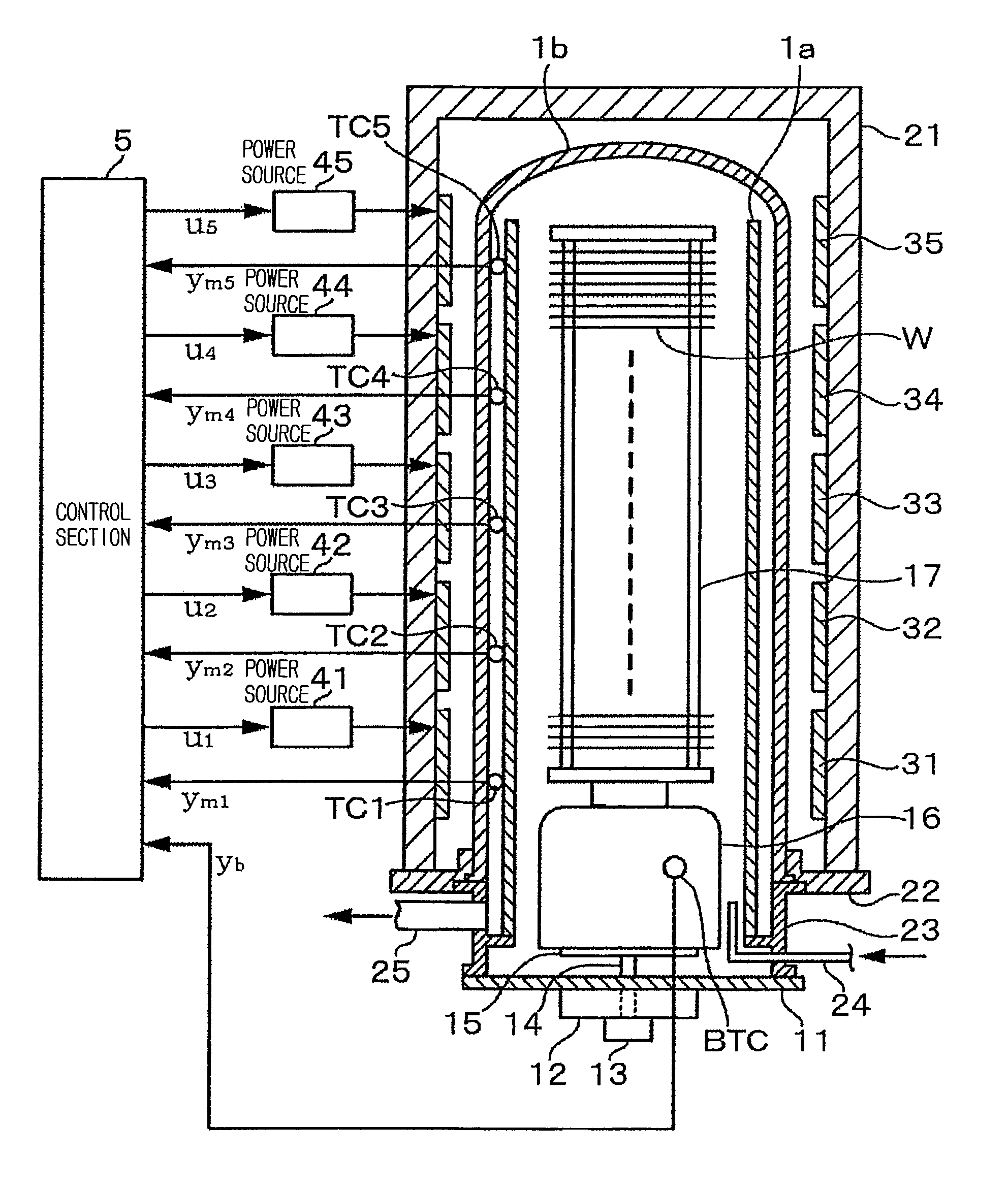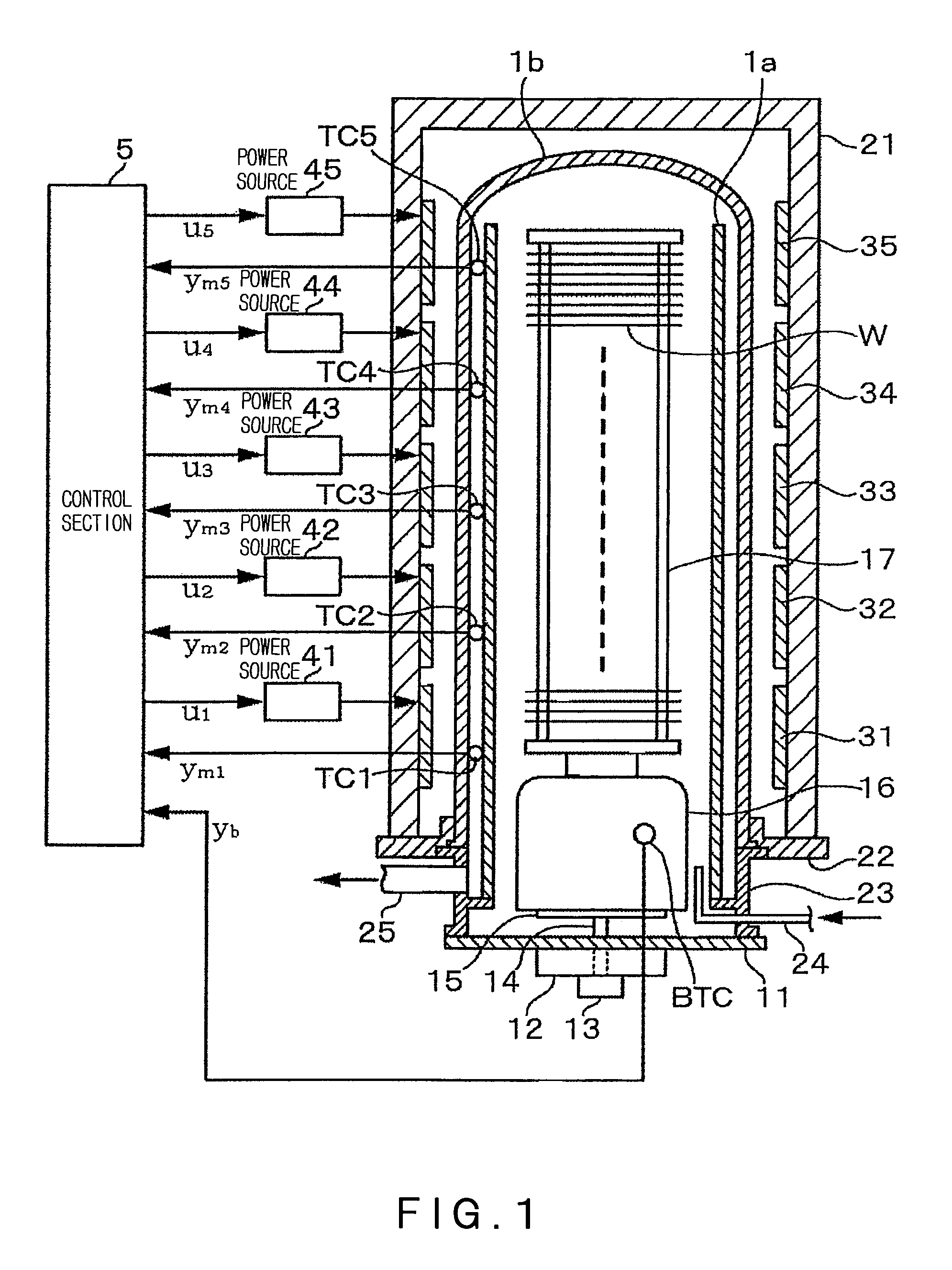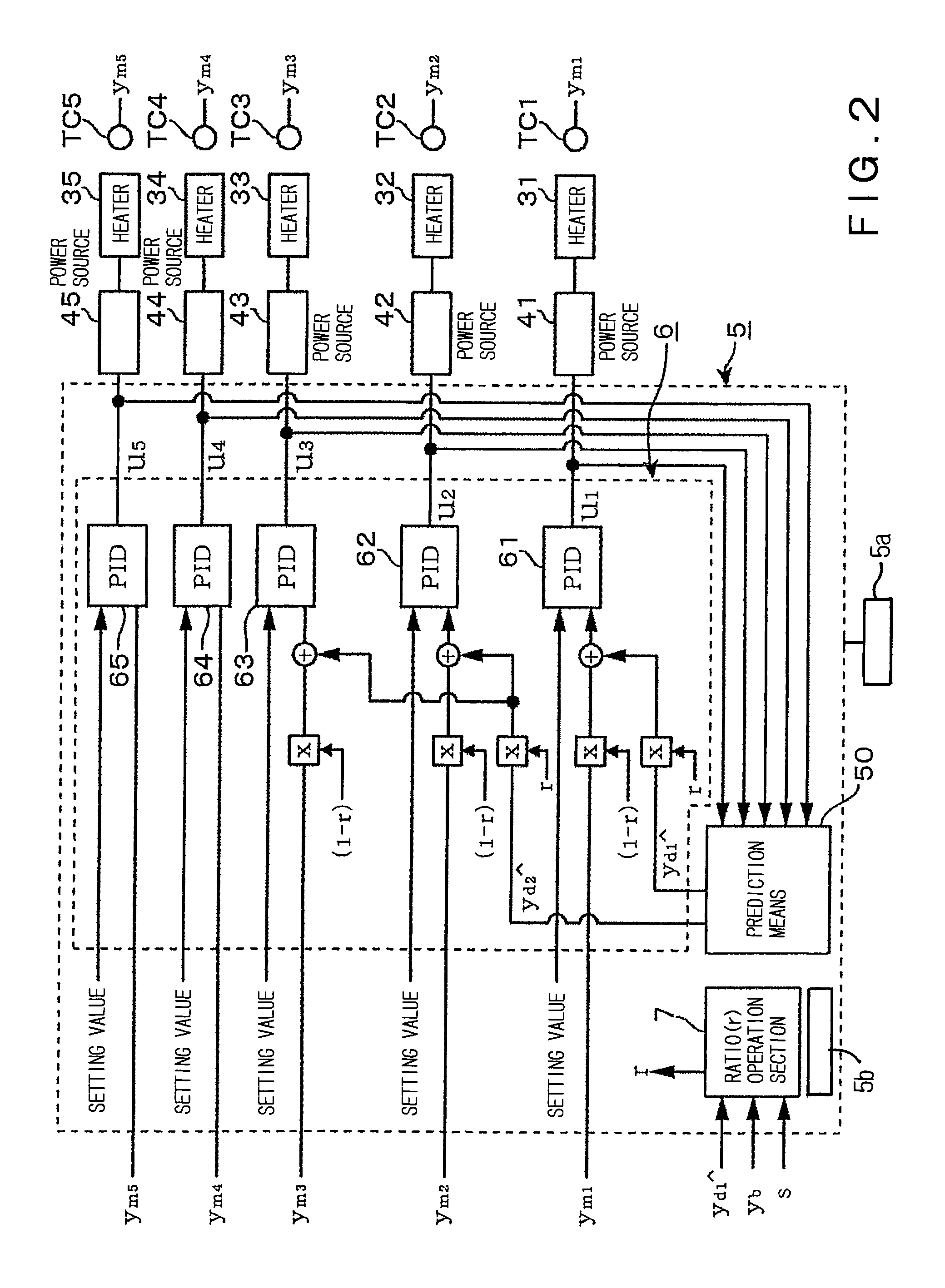Heat processing apparatus, heat processing method, computer program and storage medium
a heat processing apparatus and heat processing technology, applied in the direction of adaptive control, electric controllers, instruments, etc., can solve the problems of temperature drop, insufficient power supply of each heater b>103/b>, and difficulty in stabilizing the temperature of the inner wall of the inner tube b>100, etc., to achieve rapid temperature stabilization
- Summary
- Abstract
- Description
- Claims
- Application Information
AI Technical Summary
Benefits of technology
Problems solved by technology
Method used
Image
Examples
examples
[0045]FIG. 1 shows the entire construction of one embodiment, in which the present invention is applied to a vertical-type heat processing apparatus. First, the entire construction of the vertical-type heat processing apparatus will be described in brief. The vertical-type heat processing apparatus includes, for example, a quartz tube having a double tube structure, comprising an inner quartz tube 1a opening at both ends and an outer quartz tube 1b closed at its top end. In this example, since the inner wall 1a divides the heat processing atmosphere, a reaction vessel corresponds to the inner tube 1a. Around the outer tube 1b, a tubular thermal insulation layer 21 is provided, being fixed to a base body 22. On the inner wall of the thermal insulation layer 21, a plurality of heaters each comprising a resistance heating material are provided to be separately arranged, for example, in the vertical direction. In this example, the number of the divided stages of the heaters is, for exam...
PUM
| Property | Measurement | Unit |
|---|---|---|
| temperature | aaaaa | aaaaa |
| temperature | aaaaa | aaaaa |
| power | aaaaa | aaaaa |
Abstract
Description
Claims
Application Information
 Login to view more
Login to view more - R&D Engineer
- R&D Manager
- IP Professional
- Industry Leading Data Capabilities
- Powerful AI technology
- Patent DNA Extraction
Browse by: Latest US Patents, China's latest patents, Technical Efficacy Thesaurus, Application Domain, Technology Topic.
© 2024 PatSnap. All rights reserved.Legal|Privacy policy|Modern Slavery Act Transparency Statement|Sitemap



